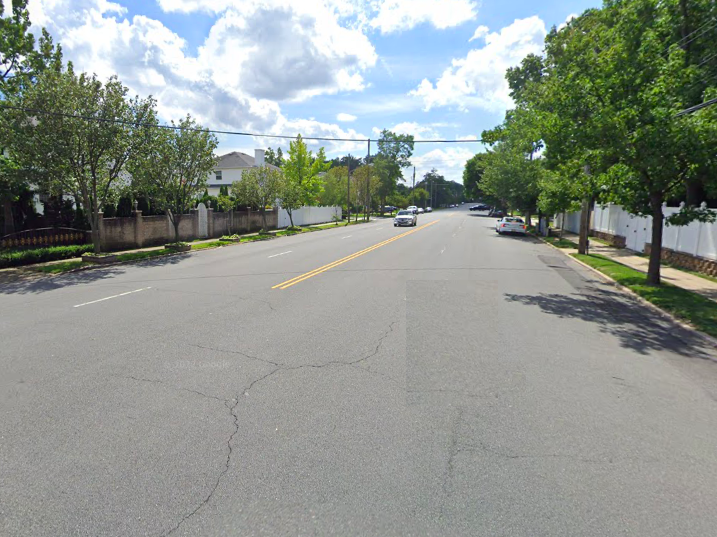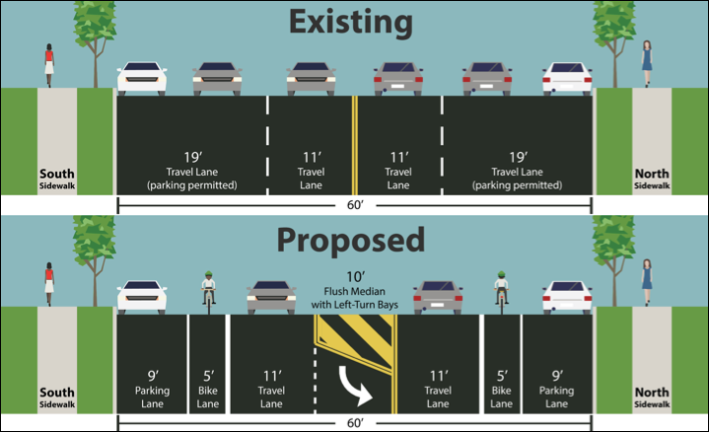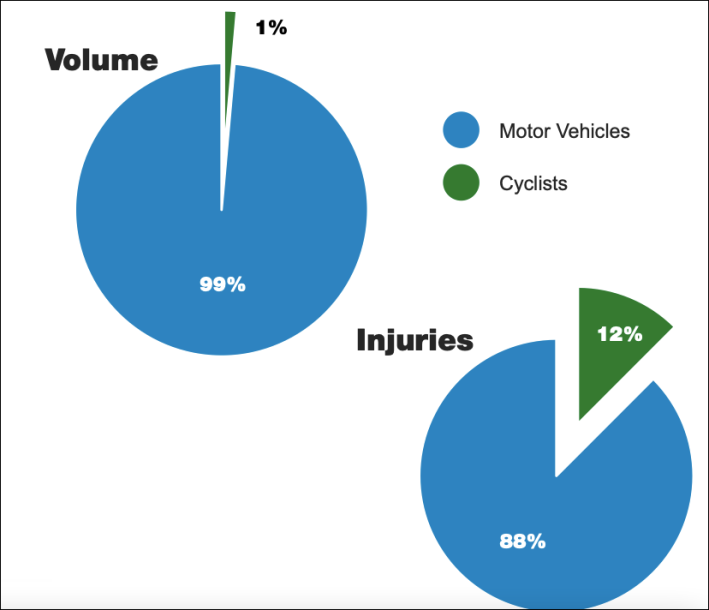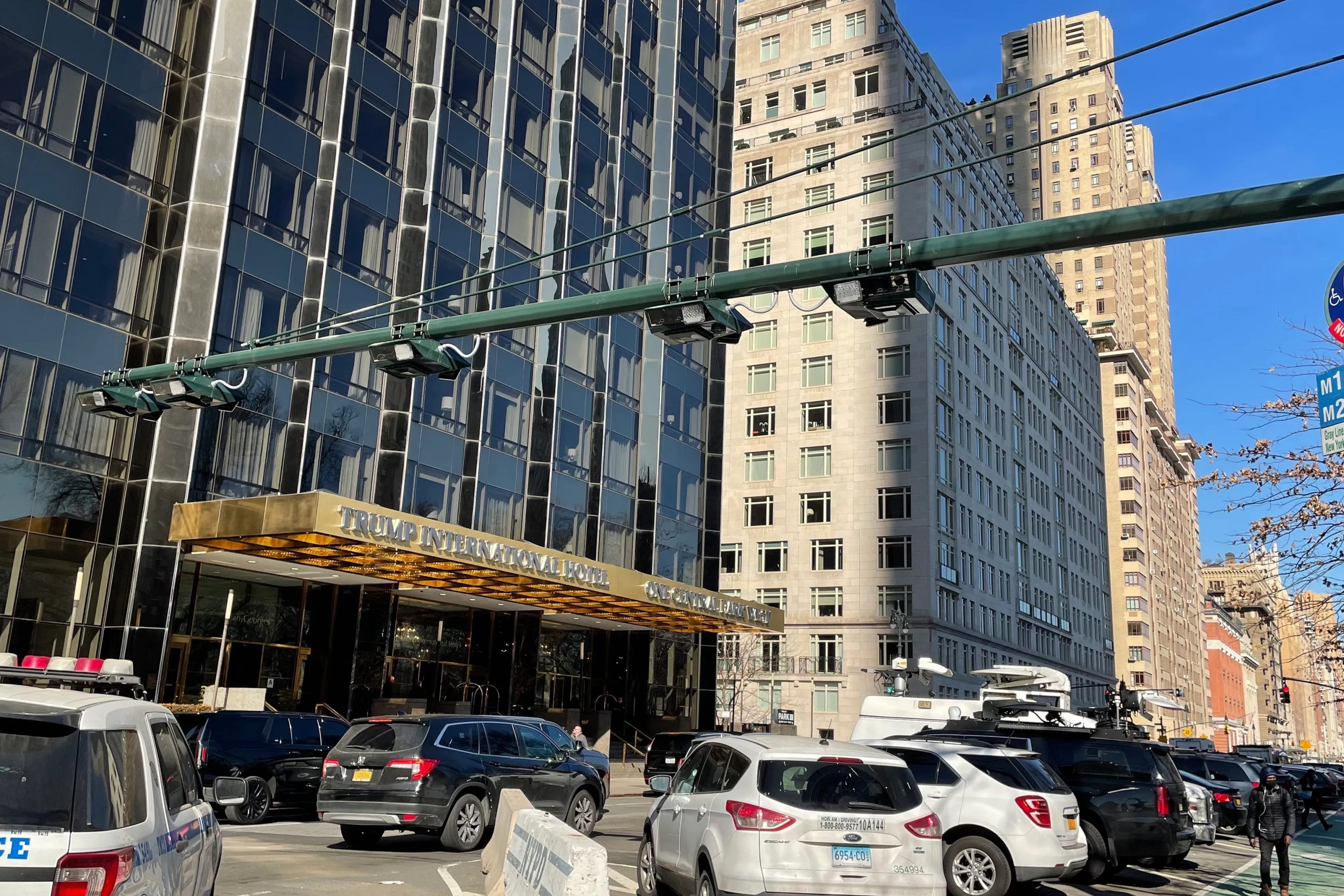This road diet is just what the doctor, or in this case the senator, ordered.
But Department of Transportation says it will narrow the southernmost, and most wild, portion of Staten Island's Hylan Boulevard from four speedway-like lanes into one lane in each direction, with a turning bay in the middle — the agency's latest crack trying to retard recklessness on the Rock.
In a presentation to Community Board 3 last week [PDF], the agency laid out a compelling case for putting Hylan Boulevard between Page Avenue and Satterlee Street on what it calls a "road diet" — a classic narrowing of the moving car lanes from two in each direction to one, with the addition of painted bike lanes on both sides. And Staten Island Borough Commissioner Roseann Caruana put the work in personal terms, saying that her grandparents were killed in a crash on Hylan in the 1950s.
"Hylan Boulevard needs safety improvements," the agency presentation declared, citing the shockingly high rate of "killed or seriously injured" road users on the 1.2-mile strip: Between Page and Satterlee, that "KSI rate" is 7.5 people per mile, which is nine times higher than the per mile rate for all of Staten Island and 2.5 times higher than the rate for all of New York City.
And the agency said that the lack of a safety redesign on the lower portion of Hylan is hurting cyclists the most (see chart, right). Cyclists, who are just 1 percent of the road users, comprise 12 percent of the victims.
The agency is also steadfast in its defense of "four-to-three" conversions, citing myriad wide roadways that were made healthier when put on a diet. On Macombs Road in the Bronx, the KSI rate dropped 44 percent after the road diet was built. On Gerritsen Avenue — where several people had died before the city finally acted — it dropped 40 percent.
The safety improvements come from having a narrower roadway promoting safer speeds, and the left-turn bays that make turns safer, the agency said.
And the bike lanes, the agency added, would define the space for cyclists. Though painted lanes do not offer physical protection for cyclists, the agency says painted lanes reduce the risk of injury for cyclists by 26 percent on "mid-volume" streets.
Speeding, of course, is a central issue on the Wild West portion of Hylan Boulevard, where the speed limit was dropped from 40 miles per hour to 30 miles per hour last year. As such, for Staten Islanders, the Hylan road diet is a cautionary case of, "Be careful what you wish for… because the Department of Transportation just might give it to you."
During the debate over speed cameras last month, Staten Island state Sen. Andrew Lanza lambasted the DOT for failing to redesign Hylan Boulevard, preferring to use speed cameras as its form of deterrent. Lanza has a point: after the speed limit was dropped last year, the two speed camera systems south of Page Avenue issued 1,356 speeding tickets to drivers going more than 40 miles per hour in the new 30-mile-per-hour zone — evidence that the drivers on that stretch of the roadway still felt that 40 was a reasonable speed at which to be driving a 3,000-pound machine.
Dropping the speed limit without redesigning the road, he said, was a "speed trap."
Lanza didn't return a call seeking comment on the new plan that he indirectly sought, but Council Member Joe Borelli, also a Rock Republican who has opposed the speed camera program, pronounced himself "100 percent opposed" to the Hylan road diet.
“Thousands who use this road each day will be inconvenienced by DOT central staffers who couldn’t pick Tottenville Pool out on a map if I dared them, all for the benefit of 251 aspiring Greg LeMonds who cycle this stretch on the weekends," Borelli, who has been caught on camera speeding, told Streetsblog. "That’s all they counted, and most were actually counted twice as they turned around. Can’t make it up. It’s not even an original plan; it’s the same plan that resurfaces every few years like a World Cup of crap ideas. I cycle there too, and it’s fine as is.”
DOT spokesman Vin Barone, who can find the Tottenville Pool on a map, took exception with one thing Borelli said.
"I would point you to injury data in the Hylan presentation with regards to his comment that it’s 'fine as it is,'" he said. “This proposal will deliver proven methods to improve traffic safety while also expanding cycling access to the South Shore’s beautiful greenspace and greenways.”
That said, the proposal is merely that — a proposal. The agency is reviewing the feedback it is receiving and will return to the community before it begins construction, officials said.








